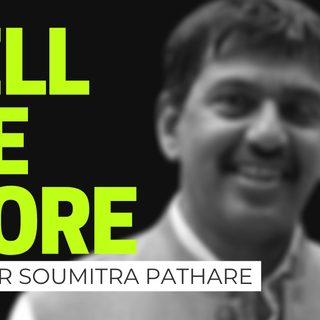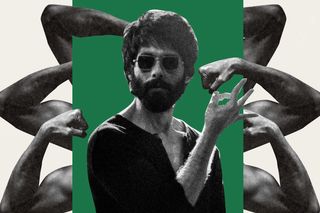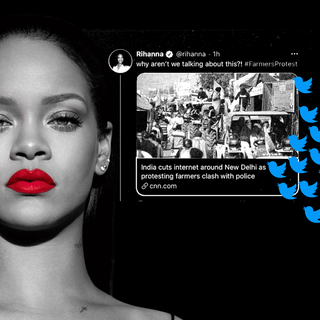
India Has a Toxic Masculinity Crisis. How Do We Detox It?
“The patriarchal messaging is constant, so the reverse flow needs to be constant.”

India has a toxic masculinity crisis. But like most successful buzzwords, the phrase ‘toxic masculinity’ is now so reductive, it’s stoking the crisis.
‘Toxic masculinity’ casts masculinity as a problematic monolith. Not only do the norms and experience of masculinity differ widely across time and place, but if the goal is a world in which all gender identities receive equal respect, value, and space, then we must allow masculinity to be considered a valid gender expression. It’s the expression of it that’s often toxic.
That’s not to say masculinity itself doesn’t need rethinking. Aggression, entitlement, discrimination — these are the dangerous and unhealthy expressions of an out-of-reach, out-of-touch, idealized masculinity, according to sociologist Raewyn Connell. But so far, the path to a healthier Indian masculinity — one that offers a broadened list of acceptable behaviors for men and boys, and creates value and space for other genders — has ground to a halt at the dismantling stage. There’s a long list of don’ts — don’t harass or assault; don’t interrupt; don’t be silent; don’t manspread; don’t mansplain; don’t cry; don’t not cry; don’t be like Kabir Singh; don’t like Kabir Singh. The problem with this is that humans change their behavior more quickly and sustainably by being told and recognized for what to do rather than what not to do.
So what is it that Indian men – especially cisgender, heterosexual, educated, and class/caste-privileged men – must do to recraft masculinity and detach a gender identity from social privilege?
“The patriarchal messaging is constant, so the reverse flow needs to be constant,” says Ashwin Chandrasekhar.
For the co-host of The New Manifesto, a podcast exploring masculinity in the 21st century, the relentless conversation about the experiences and values that underpin life as a man is a critical tool in rebuilding a healthier version of masculinity. It’s about creating an “internal ethical compass … informed by principles of social justice, by progressive values,” he says.
Chandrasekhar doesn’t mean navel-gazing, or bloviating, but actual attempts “to look outside of [one’s] experience,” he explains.
To do that, one must start by looking critically at one’s own experience. What men will realize, Chandrasekhar hopes, is that much of how they associate masculinity with their identity is a façade, a performance.
Related on The Swaddle:
The Men Helping Other Men Challenge Toxic Masculinity
“You might think this person’s experience is very removed from yours. But really 90% of their lives is performing masculinity just like you do,” he says. “And there’s this 10% of their lives that they really hold close to their hearts.”
If masculinity can broaden to include that 10%, it could have an outsized impact — which is why the relentless conversation Chandrasekhar calls for has to be rolled out at a mass scale. But while books, songs, movies, and publications have jumped on the #feminism bandwagon, “I don’t see a similar destination that is tackling this issue from the boys’ side at the moment,” says author Rajat Mittal. “Most of these publications are still pandering to the same low-level, clickbaity ideas of cars, girls, and money. If you look at most men’s magazines … for instance, they’re still pandering to the same old cliché [of masculinity]. They don’t even have a column on how men gatekeep each other. They don’t discuss this stuff.”
It’s a large ask for an industry and a cultural male identity flailing between the extremes of rape headlines and woke Twitter. Critical masculinity studies is barely 20 to 30 years old in India and only tenuously accepted. Which means public conversation is even more hobbled. When masculinity reaches popular discourse in India, it’s either as the driver of the country’s dismal statistics around violence against women and girls, as the antagonist to the country’s 2018 #MeToo movement, as the patronizing responsibility to protect women, or as a vehicle for women’s empowerment. When boyhood makes the news, it’s an ephemeral, viral-moment PSA.
The dearth of a popular discourse that elevates new, healthier heroes of masculinity allows the old stereotypes for manhood to fester even as norms for women (slowly) evolve. Boys are expected to study certain topics, so they can get certain degrees, and then high-paying jobs that will allow them to fulfill their responsibility as breadwinners, says Mangesh Kulkarni, Ph.D., a professor of political science at Savitribai Phule Pune University and one of India’s most prominent pro-feminist scholars of masculinity.
Mittal’s newest project, Boyish, attempts to address this. The newsletter spotlights the hidden 10% of men’s identities that Chandrasekhar spoke about by featuring those who have stopped performing masculinity (at least in terms of education and employment), have stopped hiding the ‘unmasculine’ things they love, and who have been rewarded by society for it.
Related on The Swaddle:
Can We Move On? From the Man‑Child Trope as the Only Counter to Traditional Masculinity
Mittal and Chandrasekhar are among those most privileged by Indian masculinity. And as with any power structure, the most privileged find it easiest to buck the system. While these conversations are important — critical, even — among India’s most privileged men, part of rebuilding a healthier masculinity has to involve tearing down the hierarchies within it.
“Even simply introducing legal measures is not enough – you need to change people’s thinking and behavior” around broader systems of inequality, like caste and class, Kulkarni adds, in order for masculinity to evolve.
A critical part of reshaping masculinity to date has been elevating the voices of women, queer, and otherwise disadvantaged thought leaders. But adding a layer for men to talk with men about the do’s of a new masculinity elevates a cause that has done well at the micro efforts into the macro leagues — into a less-toxic framework for being.
“We’re very brazen with calling out men, and that’s an important aspect,” Chandrasekhar says, “but being able to have a conversation that [an altered concept of masculinity] is an important social outcome that’s good for [men], good for all of us, and really pinpointing why this is good for [men]” is how to arrive at a healthier version of masculinity.
“Being able to explore your own masculinity and the downsides of it and the assumptions you live with allows you to embrace [more] sides of your identity,” he adds. “You can share it with a lot more people.”
And more people can share in the space that identity used to take up.
Liesl Goecker is The Swaddle's managing editor.
Related


The Buzz Cut: Why Grown Indian Men Burned Effigies of a Teen Climate Activist
